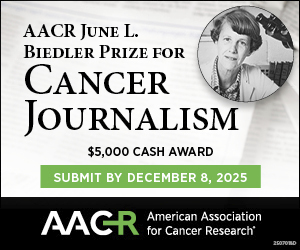Getting your book into the commercial pipeline requires understanding the machinery of the book trade.
The first steps in making your book an "official" publication means immersing yourself in an alphabet soup of publishing terms:
- <LI>You will need an ISBN (International Standard Book Number), which you can purchase in blocks of ten from R. R. Bowker. The ISBN identifies you as the publisher of your title. Do not let a subsidy publisher sell you a single ISBN. And there is no need to contract with a consultant to buy ISBNs for you.</LI><LI>You will need a bar code for your book, which includes the ISBN and book price. If you use a book designer, he/she will generate your bar code for you.</LI><LI>You need to fill out an ABI (Advanced Book Information) form on the BowkerLink system page. This form is absolutely critical to getting your book into the marketplace, because it gets your book listed in Books in Print, the basic source of book information for the entire book trade. Here is a list of Bowker's publisher services. </LI><LI>You need a LCCN (Library of Congress Catalog Number), which you can obtain through the Library of Congress Web site.</LI><LI>The Library of Congress also issues the CIP (Cataloging in Publication) record, which is the bibliographic record used by librarians and printed in your book. It includes the Library of Congress subject headings, Dewey decimal numbers and Library of Congress classification numbers. The catch is that you have to have three titles already published to get the information from the Library. However, for a fee, Quality Books will provide such a record for publishers with only a single book.</LI></UL>
A good summary of this information can be found in Poynter's secret list of book promotion contacts, which also includes lists of directories, book reviewers and other important resources.
Now that you've swum your way out of the alphabet soup, you'll want to understand a similarly complex realm of wholesalers, distributors and fulfillment houses. Wholesalers are "pull" services that only make your book available to the book trade when ordered, whereas distributors are "push" services, whose sales staffs actively visit booksellers and peddle your book. While wholesalers get 50% to 60% off the list price, distributors typically require a 67% or so discount. Distributors want an exclusive on your book, while you can list your book with more than one wholesaler.
The largest wholesaler is Ingram Book Company, which concentrates heavily on bookstores and to a lesser extent on libraries. The other major distributor is Baker & Taylor, which is stronger in the library market. Here is the supplier information page for Baker & Taylor.
As a small self-publisher, you can readily get your book listed with Baker & Taylor, but Ingram is another matter. It requires a publisher to have ten or more titles in print to be listed. However, there are strategies for single-book publishers to get their book listed with Ingram. For example, you can be listed through one of Ingram's preferred distributors.
The best explanation of such strategies is in Peter Bowerman's The Well-Fed Self-Publisher: How to Turn One Book into a Full-Time Living. Also, see the Ingram resource page for publishers for more information.
Unlike wholesalers, distributors must be pitched on carrying your book. They must be convinced that your book has sufficient sales potential and a strong enough marketing plan to warrant their listing and selling your title. See Bowerman's book for a good discussion of strategies for getting listed with a distributor and wooing bookstores.
The best distributor for reaching the lucrative library market is Quality Books. Contact them very early in your publishing process, and if they accept your book, you can ship copies directly from the printer.
Another program to consider is the Independent Book Publishers Association's Trade Distribution Acceptance Program, which helps get selected member's books into the major bookstore chains.
If you do not need a distributor to push bookstore sales, it might be more profitable to go with a wholesaler such as Baker & Taylor and use a fulfillment company — which manages the physical storage, packing and shipping of your books, as well as the selling and invoicing process. Bowerman's book includes a discussion of the circumstances under which a fulfillment service would meet your needs. However, commercial fulfillment is expensive, perhaps several dollars per book sold.
If you want to save money and you are truly starting small with your self-publishing venture and have the time and energy, you can do your own fulfillment. Dan Poynter's Self-Publishing Manual includes a good discussion of the process.
Some useful lists and references on wholesalers, distributors and fulfillment services:
- <LI>DanPoynter report on locating the right distributor</LI><LI>Dan Poynter report on book marketing to distributors, bookstores, libraries and other outlets</LI><LI>IBPA directory of distributors and wholesalers</LI><LI>John Kremer's list of fulfillment services</LI><LI>Amazon Advantage for selling books through Amazon</LI><LI>Fulfillment by Amazon</LI></UL>
Besides the Bowerman and Poynter books other good discussions of wholesalers and distributors are in
- <LI>Start Your Own Self-Publishing Business by Rob and Terry Adams</LI><LI>The Right Way to Write, Publish and Sell Your Book by Patricia Fry</LI><LI>The Complete Guide to Self Publishing by Tom and Marilyn Ross</LI></UL>


